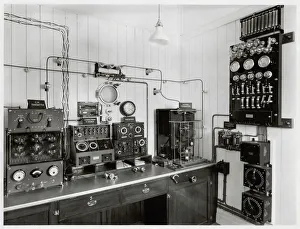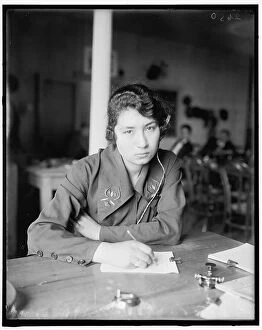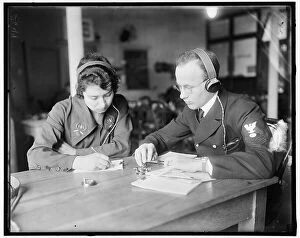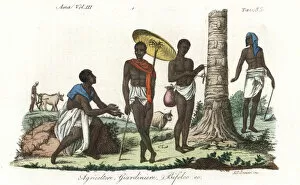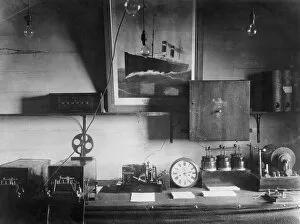Tapper Collection
"Tapper: From Ancient Traditions to Modern Innovations" From the early Marconi radio apparatus to the skilled palm-wine tappers climbing tall trees in Senegambia
For sale as Licensed Images
Choose your image, Select your licence and Download the media
"Tapper: From Ancient Traditions to Modern Innovations" From the early Marconi radio apparatus to the skilled palm-wine tappers climbing tall trees in Senegambia, the art of tapping has transcended time and cultures. In Nigeria, a mysterious artifact called "Tapper (Iroke Ifa)" from the 17th or 18th century showcases an unknown creator's craftsmanship. But tapping is not limited to physical objects; it also symbolizes communication breakthroughs. The invention of telegraphy with Morse code revolutionized long-distance messaging, as depicted in a series of cards featuring number 65. This innovation connected people across continents and shaped our modern world. Beyond technology, they can be found in various professions worldwide. Indian farmers, yokels, and gardeners utilize their skills to extract resources from nature while contributing to their communities' sustenance. Even rehearsal halls in New York City witness the rhythmic tapping of dancers' feet as they perfect their craft. In Yoruba culture, an Iroke Ifa Beater made from ivory holds cultural significance during spiritual ceremonies. Its rhythmic beats create an enchanting atmosphere that connects participants with ancestral wisdom. The influence of tapping extends beyond objects and rituals; it even leaves its mark on architectural wonders like Guildford Grammar School Chapel circa 1947. Designed by an unknown creator, this chapel stands as a testament to human creativity inspired by timeless traditions. Not only humans but animals too possess remarkable tapping abilities. Thomas Winter was known for his boxing skills where he showcased swift movements akin to precise taps on opponents' bodies - a true master at work. Meanwhile, Ruard Trapper explored South America's vast Amazonas region in Brazil capturing moments through his lens. His photographs reveal both natural beauty and everyday life scenes where locals utilized tools like Fundimig iron stoves for cooking - another form of resourceful tapping. Whether through ancient artifacts or cutting-edge innovations, tapping has woven its way into the fabric of our existence.

